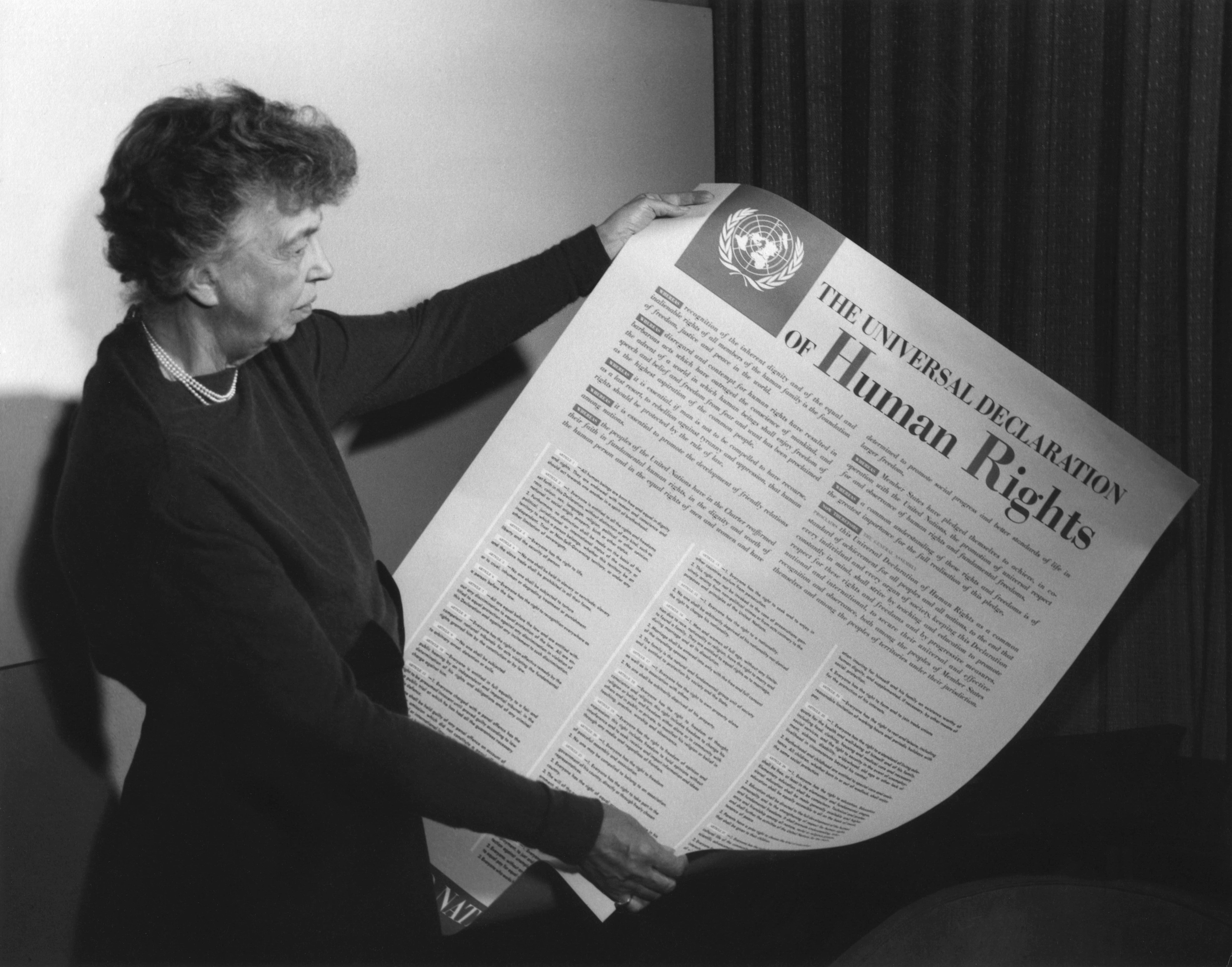International Bill of Human Rights on:
[Wikipedia]
[Google]
[Amazon]
 The International Bill of Human Rights was the name given t
The International Bill of Human Rights was the name given t
UN General Assembly Resolution 217 (III)
and two international treaties established by the
UN OHCHR Factsheet No. 2 The International Bill of Human RightsDrafting Committee on an International Bill of Human Rights, 1st sessionDrafting Committee on an International Bill of Human Rights, 2nd session
{{DEFAULTSORT:International Bill Of Human Rights Human rights instruments United Nations documents
 The International Bill of Human Rights was the name given t
The International Bill of Human Rights was the name given tUN General Assembly Resolution 217 (III)
and two international treaties established by the
United Nations
The United Nations (UN) is an intergovernmental organization whose stated purposes are to maintain international peace and security, develop friendly relations among nations, achieve international cooperation, and be a centre for harmoni ...
. It consists of the Universal Declaration of Human Rights
The Universal Declaration of Human Rights (UDHR) is an international document adopted by the United Nations General Assembly that enshrines the rights and freedoms of all human beings. Drafted by a UN committee chaired by Eleanor Roosevelt ...
(adopted in 1948), the International Covenant on Civil and Political Rights
The International Covenant on Civil and Political Rights (ICCPR) is a multilateral treaty that commits nations to respect the civil and political rights of individuals, including the right to life, freedom of religion, freedom of speech, fre ...
(ICCPR, 1966) with its two Optional Protocols and the International Covenant on Economic, Social and Cultural Rights
The International Covenant on Economic, Social and Cultural Rights (ICESCR) is a multilateral treaty adopted by the United Nations General Assembly (GA) on 16 December 1966 through GA. Resolution 2200A (XXI), and came in force from 3 January 197 ...
(ICESCR, 1966). The two covenants entered into force in 1976, after a sufficient number of countries had ratified them.
In the beginning, different views were expressed about the form the bill of rights
A bill of rights, sometimes called a declaration of rights or a charter of rights, is a list of the most important rights to the citizens of a country. The purpose is to protect those rights against infringement from public officials and pr ...
should take. In 1948, General Assembly planned the bill to include UDHR, one Covenant and measures of implementation. The Drafting Committee decided to prepare two documents: one in the form of a declaration, which would set forth general principles or standards of human rights; the other in the form of a convention, which would define specific rights and their limitations.
Accordingly, the Committee transmitted to the Commission on Human Rights draft articles of an international declaration and an international convention on human rights. At its second session, in December 1947, the Commission decided to apply the term "International Bill of Human Rights" to the series of documents in preparation and established three working groups: one on the declaration, one on the convention (which it renamed "covenant") and one on implementation. The Commission revised the draft declaration at its third session, in May/June 1948, taking into consideration comments received from Governments. It did not have time, however, to consider the covenant or the question of implementation. The declaration was therefore submitted through the United Nations Economic and Social Council
The United Nations Economic and Social Council (ECOSOC; french: links=no, Conseil économique et social des Nations unies, ) is one of the six principal organs of the United Nations, responsible for coordinating the economic and social fields ...
to the General Assembly
A general assembly or general meeting is a meeting of all the members of an organization or shareholders of a company.
Specific examples of general assembly include:
Churches
* General Assembly (presbyterian church), the highest court of pres ...
, meeting in Paris
Paris () is the capital and most populous city of France, with an estimated population of 2,165,423 residents in 2019 in an area of more than 105 km² (41 sq mi), making it the 30th most densely populated city in the world in 2020. Si ...
.
Later the draft covenant was divided in two (decided by the General Assembly in 1952), differing with both catalogue of rights and degree of obligations – for example, the ICESCR refers to the "progressive realisation" of the rights it contains. In 1998, it was hailed as "A Magna Carta
(Medieval Latin for "Great Charter of Freedoms"), commonly called (also ''Magna Charta''; "Great Charter"), is a royal charter of rights agreed to by King John of England at Runnymede, near Windsor, on 15 June 1215. First drafted by t ...
for all humanity".
References
External links
UN OHCHR Factsheet No. 2 The International Bill of Human Rights
{{DEFAULTSORT:International Bill Of Human Rights Human rights instruments United Nations documents